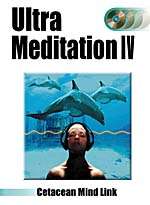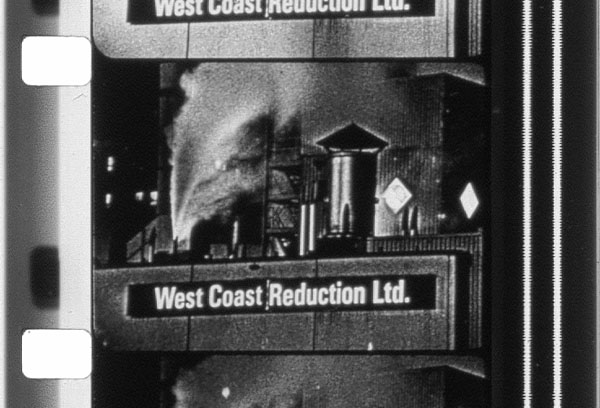What sort of songwriting credit did the whale get? It’s a legit question for a good hundred or so albums released in the 1970s. Ceta-voices feature centrally in the classical composer Alan Hovhaness’ “And God Created Great Whales” (1970); they duet in Paul Horn’s smooth jazz classic Paul Horn and Haida (1974); they playfully intersperse throughout Fifth Beatle George Martin’s nature rich Icarus (1972). Ceta-sounds describe a whole sampling blitzkrieg for pop singers (Joan Collins), hard rockers (Jethro Tull); classical composers (Toru Takamitsu), and jazzmen (Paul Winter). The Seventies was the decade of ceta-song, and its motherlode was Songs of the Humpback Whale (1970) the instructively titled album of recordings that got nominated for a Grammy 1970 and remains the highest selling nature album ever made. Spectrographic analysis had led the recording team of Roger Payne and Scott McVay to conclude that the patterns of squeaks and mumbles had a songlike structure. While some reviewers were clearly confused by the deep groans and plaintive squeaks — “music that might have come from the throat of a 40 ton canary to the rumble of a stupendous Model T with a crack muffler” said one — good ol’ Rolling Stone got it nailed: “This is a good record, dig?… Its especially good for late at night and peaceful, together moments. It stretches your mind to encompass alien art forms.”
As Jon Carroll’s words suggest, much of this whale-sampled music is best understood under the trope of New Age, as part of a ferment that included Joan Ocean’s Dolphins into the Future, with its Hawaiian ‘pod’ sociology and its theory of “sound holography” (cetacean communication); Joan McIntyre’s anthology Mind in the Waters, with its voluptuous descriptions of interspecies encounters; and John Lilly’s The Mind of the Dolphin, which sought to develop the insights of dolphin research for extra-terrestrial communication. I’ve been going through the music archive as part of a larger research project about whales and the BC coast. Not such much the big name stuff, but the cottage industry that followed it: the cassettes and blank CDRs that still fill meditation room closets. Subliminal messages, echoes, trance chords, synths, voices from the deep – its all in the grammar of New Age whale music.
My early conclusion from listening? Truly, its about the vibes. Grasping the “vibe” is almost like doing everything but listen for the signal. Grasping the “vibe” is about becoming conscious of the conditioning exchanges between self and environment given through the vibratory media. “Vibes” collapse subject-object distinctions, they render consciousness infrastructural to an entire social sensorium. This is what makes them great for socializing behaviors: ceta-sounds enable your Downward Dog to happen, they let those minutes fly off the waiting room clock and get you to let go and enjoy that rub. Sometimes the whale calls are just too wild, too interesting — they make you pay attention– but most of the time the drones and the compressed synths just get you easy. My current favorite is Dane Spott’s 1984 tape Ultra Mediation IV- Cetacean Mind Link. “Words can hardly describe the experience, it was like taking a two-week vacation in 28 minutes!” Words from Dane Spotts himself, a man who clearly got the vibe he was transmitting.
New Age whale music was more than a few bottled mating calls, it was a whole freaky style. The painful lyrics of the terrible Yes! music video are worth the price of admission alone, but substitute the splashy slo-mo breach of a humpback’s fluke with a pair of boobs and the “cetaesthetic” suddenly describes another cultural logic. A sizable chunk of New Age suggests close cousinhood with the equally-ocean obsessed “bikini-core” industry that flourished on the West Coast in the early 80s. In both cases, good feelings, energy, and the mythos of the body grace drive hedonistic, cosmetic, and objectifying impulses to feel real good. Rebecca Solnit has found parallel logics in the waterfalls of great American landscape photographers and the centerfolds of Playboy magazines. The ‘whale porn’ stretch isn’t a hard one to make… “There goes a narwhal Here comes a bikini whale!” sang the B-52s in 1979.
New Age’s DIY capitalism would be subsumed within the mainstream music industry by the late 1980s, but the pre-botox, post-modern sounds of its Seventies heyday are still very much alive. Meditation products combining whale song and mantras are easily found online. “Children’s whale music” promising better behavior and quicker to-bed times get reviewed in Science Journals. Meanwhile, as Simon Reynolds notes in his 2011 book, Retromania, a whole ‘New New Age’ of experimental musicians have begun to champion the cosmic loops and melodies of the 80s-processesed whale voices. James Ferraro, White Rainbow, Onenhetrix Point Never, Stellar Om Source, Emeralds, Ossining, and Grouper are just a few of the more prominent names. No doubt in parallel reaction to the digitization of the musical commodity, this movement covets the informal exchange of mix tapes, with their warm analogue hiss and decay; the earnest mantras about mindfulness. The semi-undergroundedness of the scene is easily observed online, in the rich blogger culture that combines the new stuff with the ‘Old New Age’ iconography of rainbows, dream vessels, mandalas, and cetaceans.
lunaratrium.blogspot.com/ crystalvibrations.blogspot.ca yogarecords.tumblr.com
Perhaps the most pertinent theme the recent stuff makes clear (if only cynically) is how much New Age really encourages its instrumentalities to shine through: the very spirit of the genre, Douglas McGowan has observed, lies in entrepreneurialism. Alongside their sounds, many of the early New Age practitioners were selling a whole spiritual home-brew: personal messages, suggested postures, breathing programs, massage products etc. A big problem with the employment animal-sounds and all their supposed renderings of Gaia-conscious guilt, then, is how eagerly they exploit a general economy of stress. New Age sounds and whale-song tapes sooth the city-dweller with a dose of ersatz tranquility. Meanwhile, the rise in boat traffic brought upon increasingly cute-ified, discovery tour-watched, hydrophone mic’ed ocean mammals has introduced a new problematic of ambient noise into their already precarious environments. The resultant stress has become a big problem.
Some of the early recorders clearly had loftier ambitions in mind when they advocated that ‘society’ take seriously the song of the whales. “We have learned,” Roger Payne said upon the release of Songs of the Humpback Whales, “that all men are created equal, but the whales remind us that all species are created equal—that every organism on earth, whether large or small, has an inalienable right to life.” But the welfare of the animal singers is totally unquestioned throughout the vast majority of the New Age hullabaloo (old or new). Sure, there’s environmentalized-concern, there’s good vibes, but what about “Who was that I was listening to? Are they still in captivity today?” “Did they benefit in the slightest from this sharing of their voice?” Not so much. The US Marine Mammal Protection Act (1973) and Greenpeace (1975) may have slowed the whaling, but the sonic thievery has continued unabated.
Thoreau: “Can he who has discovered only the values of the whale bone and whale oil be said to have discovered the true use of the whale?” Fortunately for Thoreau’s unoiled skin and brittle bones, it would be another 100 years before they got going on spiritual massage.






